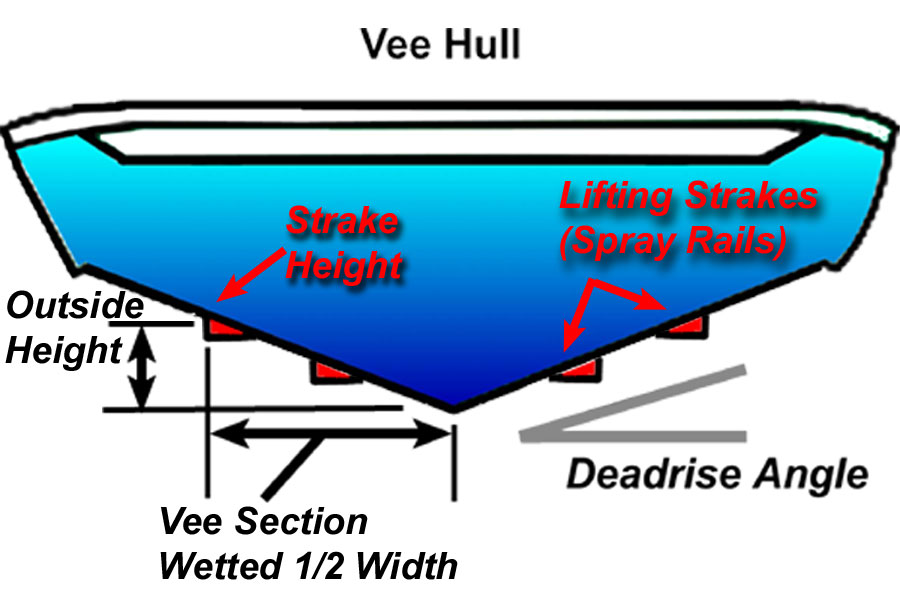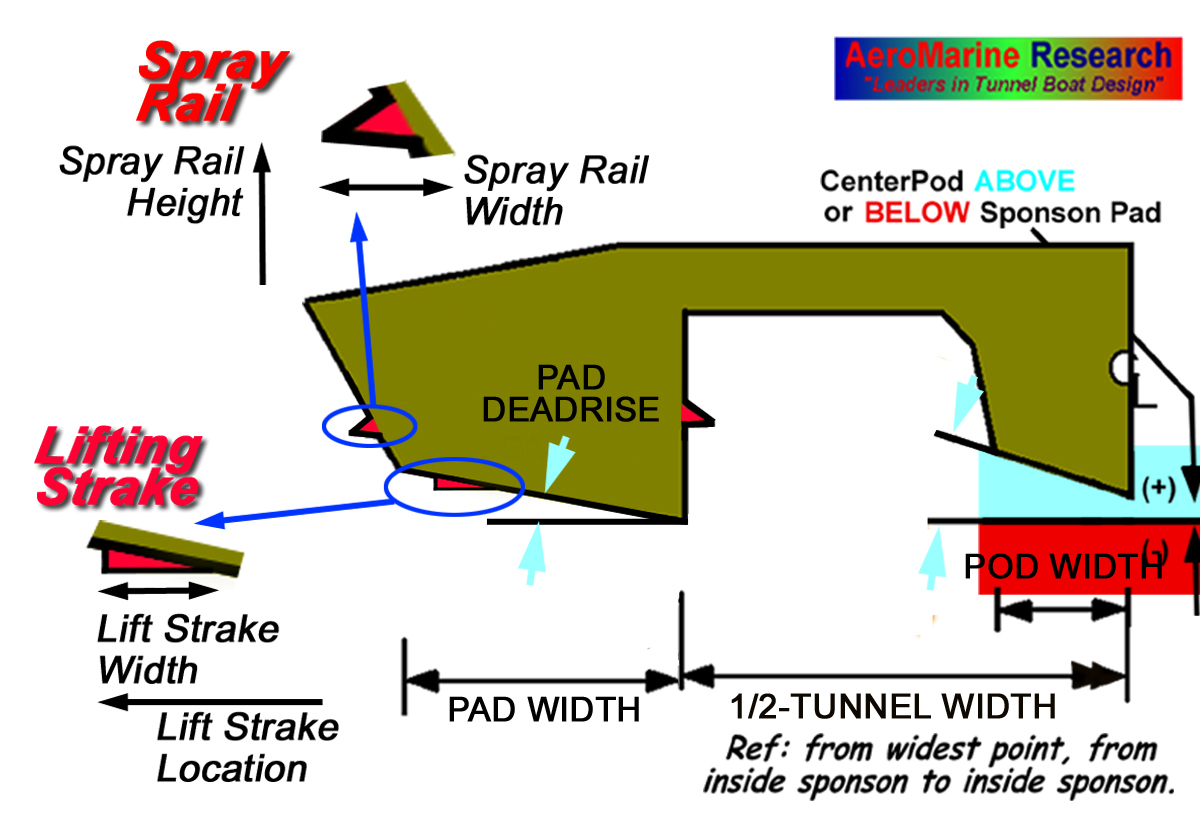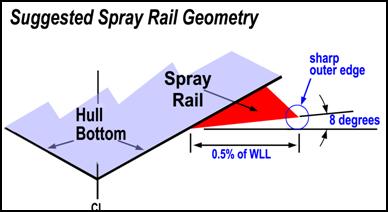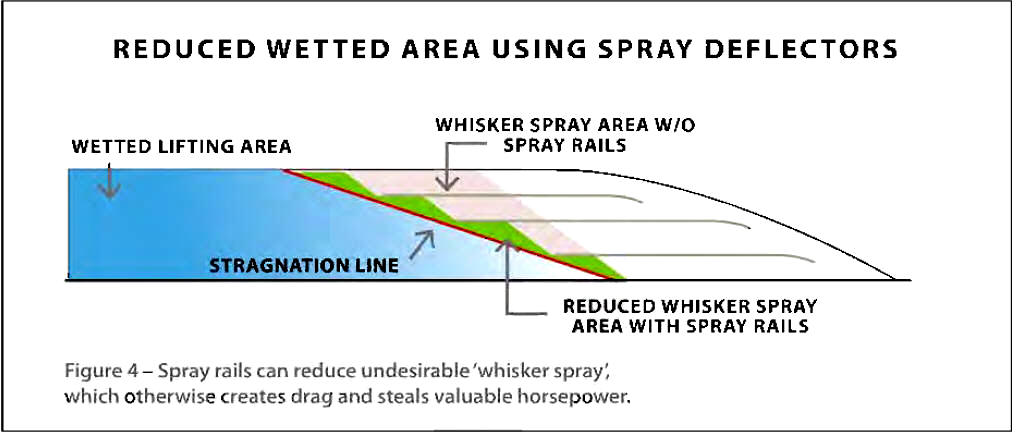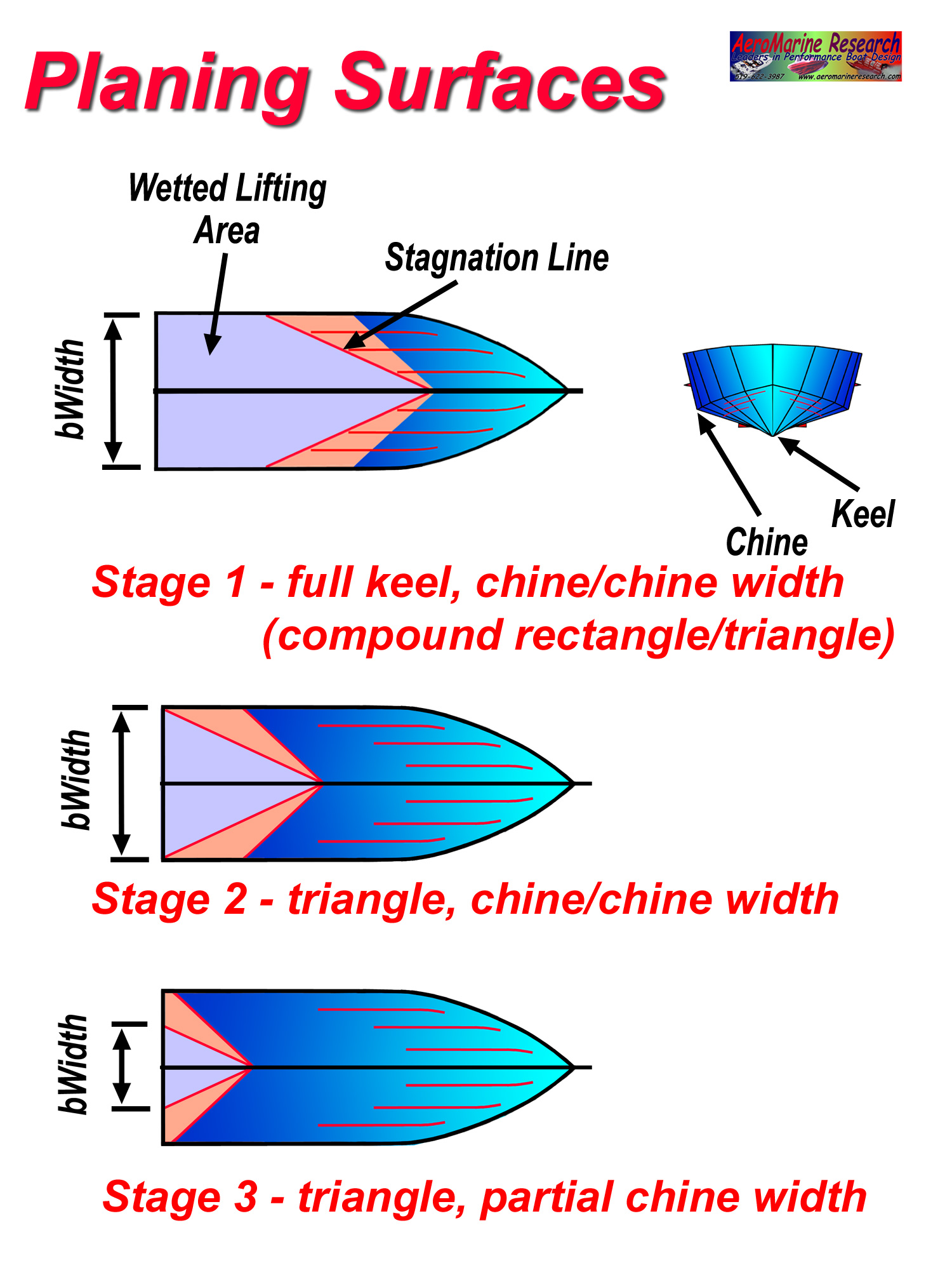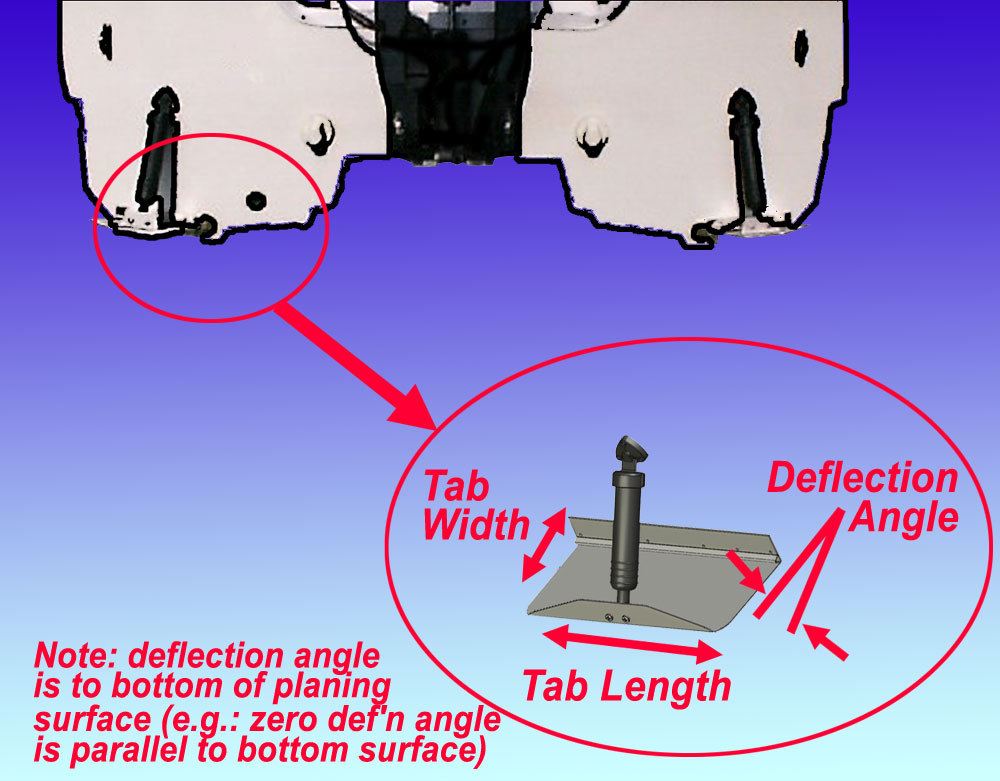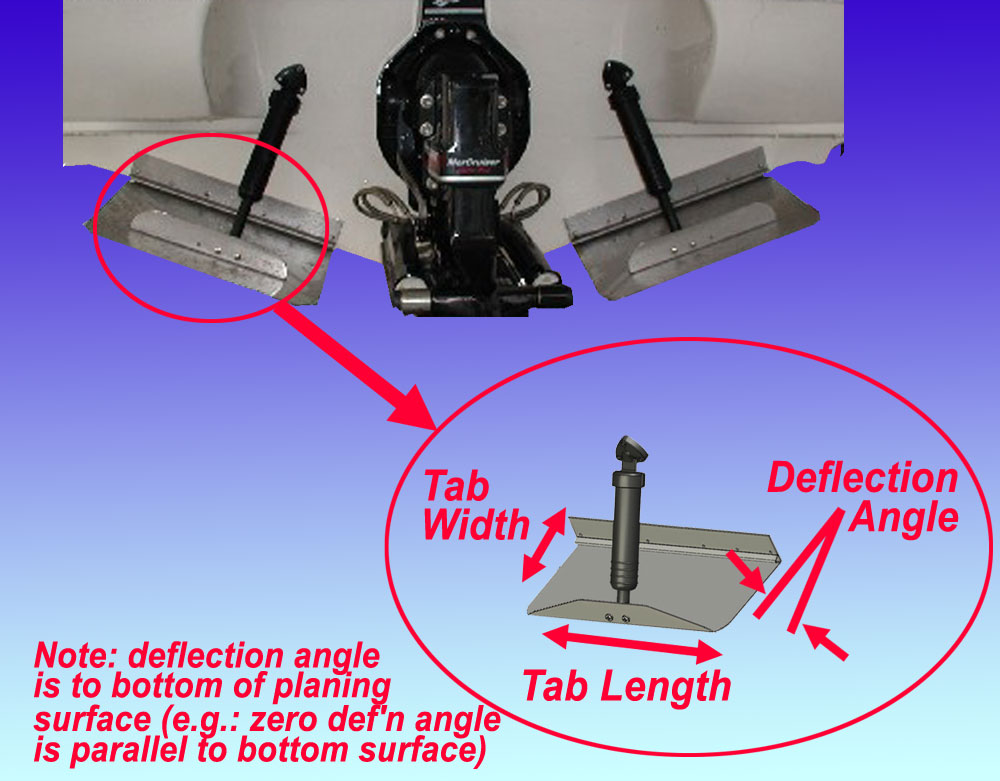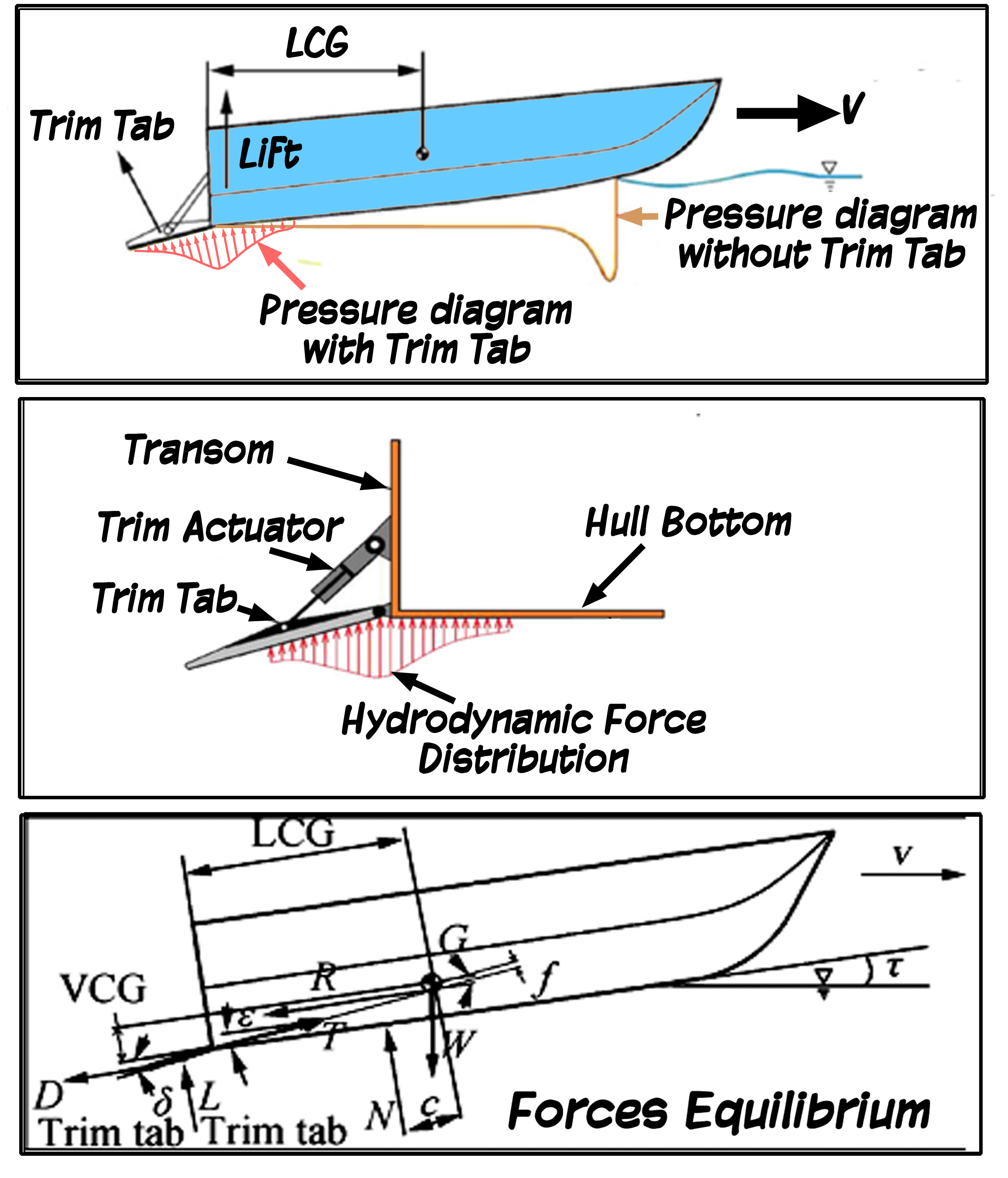|
|
|
 |
|
| Performance Boat design and setup secrets for Recreational tunnels, Offshore Cats, Racing tunnels, Fishing/Utility hulls, Vee and Vee-Pad Hulls, Bass Boats | |
| Home New About Us Free Articles Technical Articles TBPNews Archives FREE Downloads Research Contact Us | |
Testimonials What Others Say
Join
TBPNews Advertise
Links
Search Buy Now 
|
|
| AR© develops advanced analysis techniques for Spray Rails, Lifting Strakes and Trim Tabs. | ||
| Get complete article by email request: | Share: | |
| Updated: Dec 31, 2024 | BREAKTHROUGH! | |
|
|
TBDP©/VBDP© calculates Lift and Drag contributions from Lifting Strakes, Spray Rails
and Trim Tabs - for ANY hull design configuration, throughout the
entire operating velocity range AR® has developed analysis techniques that calculate hydrodynamic lift and drag contributions of Lifting Strakes, Spray Rails and Trim Tabs. These performance aspects are different on tunnel hulls and vee hulls, and so are, handled appropriately for each design, each setup arrangement and at each operating velocity. Lift/drag contributions of each of these features vary at different velocities, placement, local bottom shape and hull loading. At some speeds they are not effective at all. It's important to recognize that Spray Rails and Lifting Strakes are not the same. Spray rails are located lengthwise on the hull, positioned symmetrically, usually near the outer chine of the hull. Spray rails or 'spray strips' or 'spray deflectors' are flat or triangular in shape and have a singular purpose of deflecting water and spray away from the hull. The 'whisker spray' from highly loaded lifting surfaces can wet a significant portion of your hull surface, causing additional drag without the benefit of any lift. Spray rails deflect spray, they don't provide any hydrodynamic lift for the hull. Spray rails can also provide a drier ride, reducing overspray to passenger areas - sometimes otherwise uncomfortable for some boats in wavy conditions. They are more effective on higher-speed hulls and have little effect on displacement hulls. Lifting Strakes are longitudinal members running fore and aft on the outside bottom of the hull. Usually most effective on vee hulls, lifting strakes are triangular in shape, positioned symmetrically (the same on each side of the hull centre line) and usually located closer to the hull's keel. Properly designed with their flat contact surface horizontal or parallel to the water, their purpose is to provide increased lift, making the hull more efficient and potentially faster. There may be several pairs of strakes located on the hull bottom. Strakes may run the entire length of the hull bottom, or may be shorter in length and placed at particular locations on the hull where additional lift is needed, thus 'tuning' the lift location for improved 'dynamic stability'. There's a difference - Lifting strakes are different from spray rails in that their design purpose is to provide hydrodynamic lift. Spray rails deflect spray and are not intended to provide any lift. Effectively designed lifting strakes can provide some spray deflection themselves while they're doing their intended job of adding lift to the hull surface. Spray Rail Design - A spray deflector should be triangular in shape with it's bottom nearly horizontal to the water surface – or at a slight upward (8°) angle. The 'downward-angled' spray rails seen on some boats are less than optimum for effectively diverting the spray away from the hull surface. The outer edge of the spray rail should be sharp and not rounded. Sometimes multiple sets of spray rails are employed when the hull has a particular issue with excessive 'wetting'. While vee hulls and tunnel hulls can both be seen with spray rails, higher-deadrise hulls usually create more spray and hence the positive effect of spray rails is more enhanced on deeper-deadrise hulls. [see also article: Design of Strakes and Spray Rails] Spray Rail Analysis - When a typical hull is planing, particularly at higher speeds, the hull gets its lift from the wetted lifting area of the hull bottom.The forward portion of this lifting area is a triangular shape. Behind this triangle, defined by the 'stagnation line' is the lifting area - this is the wetted surface that does the good work of lifting the hull out of the water. Ahead of the stagnation line (see Fig 4) there is an area that sees spray from the high-velocity water that flows along the hull surface. For higher-deadrise hulls and at higher velocities, this 'whisker spray area' can be large, causing additional drag on the hull. This added drag steals valuable horsepower and reduces the efficiency of the hull. There is normally less spray at the aftmost part of the hull, and so spray rails are often terminated further forward, nearer to the stagnation line. Research has shown that spray rails that are too long (i.e. they extend too far aftward into the 'lifting portion' of the hull) will have no benefit and can actually cause additional drag. TBDP©/VBDP© software analysys accounts for the use of spray rails in all vee and tunnel hulls, in above-chine, below-chine and even in center-pod locations; and calculates location of 'whisker.spray' zone, and resultingdrag, including influence of spray rails. Lifting Strakes can be specified for tunnel hull or Vee hull configurations. TBDP©/VBDP© software accounts for the use of Lifting Strakes in your hull design. Select use of Lift Strakes by making selection of the drop-down box on Input Screen #4, selecting “One Strake”, “Two Strakes”, “Three Strakes” or “No Strakes”. Input dimensions for Lift Strake Width and Strake location. Strake location dimension on Vee Hull is specified as horizontal distance from centerline of hull; strake location dimension on Tunnel Hull is specified as horizontal distance from inside of sponson keelson. TBDP©/VBDP© assumes that there are Lift Strakes on both sides of hull (pairs); input dimensions are for each Lift Strake. Lift Strake Design: High-lift strakes are located symmetrically (on both sides of the keel) and parallel to the keel of the hull. They are triangular in shape with their lower surface flat and horizontal (parallel) to the water surface (0° angle). The corner/edge of the strake should be sharp, not rounded. Care is needed to consider the 'trip edge' presented by lift strake as this can hamper maneuvering (turning). Lateral placement of strakes is important, particularly when employing multiple strakes. [see also article: Design of Strakes and Spray Rails]. Lift Strake Analysis: Lift strakes contribute to hull hydrodynamic lift based on their local effectiveness at various hull conditions and velocities. The length of wetted strake length affects amount of lift and location of lift contribution forces. The bWidth of hull planing surfaces changes with trim angle, variable deadrise and velocity (see Fig. 5). This affects each strake location, and is particularly complex when employing multiple strakes in the hull design. As velocity increases, outermost located lift strakes can become 'un-wetted', no longer contributing to lift. This is different for each strake location. For example, with a hull employing 3 longitudinal strakes, as operating speed increases, the 'wetted zone' of the bWidth 'triangle'-to-partial chine width is changing. This can progressively 'unwet' first the outermost (3rd), then the 2nd strake and ultimately even innermost (1st) of 3-set strakes. Lift, drag and center of lift location are affected. Accurate hydrodynamic analysis must take all of these conditions into account through the full hull operating velocity range. Advanced analysis programs, such as TBDP©/VBDP©, that analyze true locally wetted strake lifting force(s) and location(s) can be used to optimize location and sizing of lift strakes that are effective lifting devices at the desired velocities.
Complex analysis solves Lift/Drag and moments generated by deflected Trim Tabs, and effects on Dynamic Stability, Porpoising, ForceMoments. TBDP©/VBDP© allows for setting of auto-retraction at specifiied velocity for safe/practical analysis. Trim Tabs Design - caution should be used when defining dimensions and setup of Trim Tabs (and particularly in actual use with your hull on the water). Trim Tabs that are sized or set up so as to provide a significant % of the total lift of the hull can create instability. Tabs should be retracted when hulls are at higher velocities. |
|
|
Research results now included in performance analysis by TBDP©/VBDP© [more about AR's research more about AR's publications and technical articles/papers] |
||
|
© Copyright 2017 by Jim
Russell and AeroMarine Research® - all rights reserved. Material from this website may not be copied or used or redistributed, in whole or in part, without the specific written consent of Jim Russell or AeroMarine Research. |
||
